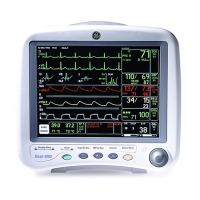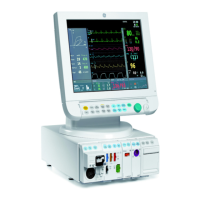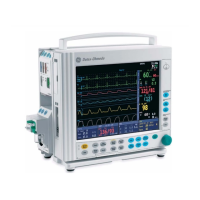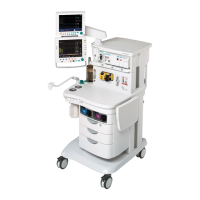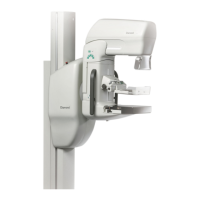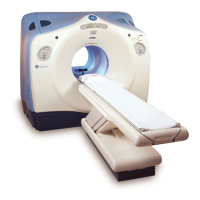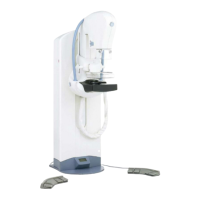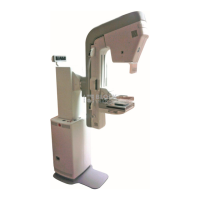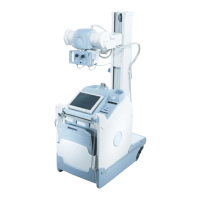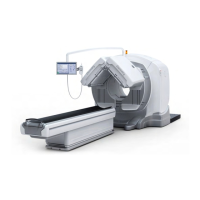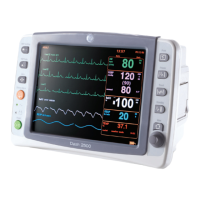
Do you have a question about the GE Dash 2500 and is the answer not in the manual?
| Brand | GE |
|---|---|
| Model | Dash 2500 |
| Category | Medical Equipment |
| Language | English |
Describes the display capabilities and interaction methods.
Details the specific functions of each hardkey on the monitor.
Covers various system-level settings and operations.
Provides detailed technical specifications for the monitor.
Step-by-step guide for turning on and beginning monitoring.
Explains how to access and interact with the monitor's menu system.
Details how to access and use extended and associated menus.
Explains using the Trim Knob for menu interaction.
Describes the main display areas and their functions.
Explains waveform and menu screens and associated symbols.
Provides in-depth instructions for using each hardkey.
Instructions for starting, stopping, and cancelling NIBP measurements.
Details how to initiate auto and stat NIBP determinations.
Describes how to temporarily silence alarms.
Instructions for turning the monitor on and off.
Describes how to access and view patient trend data.
Instructions for entering and exiting standby mode.
Covers system-level settings like date/time and battery icon.
Provides the procedure for safely shutting down the monitor.
Explains alarm types, locations, and visual/audible feedback.
Details how alarms can be interrupted and their priority levels.
Defines the hierarchy of alarms: crisis, warning, procedural, message.
Steps for acknowledging and addressing active alarms.
Covers setting and adjusting alarm limits for parameters.
Details how to access and modify alarm parameters.
Explains viewing configuration options related to alarms.
Procedure for responding to critical system errors.
Details the options within the Admit Patient menu.
Methods for accessing and navigating trend data.
Instructions for displaying trend data in number format.
Instructions for displaying trend data in graph format.
Details on obtaining thermal-paper strip recordings.
Instructions for starting and stopping recordings.
Accessing and configuring recorder functions.
Step-by-step instructions for loading thermal paper.
Lists common recorder errors and their responses.
Explains how HR/Pulse is derived from various sources.
Step-by-step guide for setting up HR/Pulse monitoring.
Accessing and configuring HR/Pulse settings.
Choosing the primary source for HR/Pulse data (ECG, SpO2, NIBP).
Setting high and low alarm limits for HR/Pulse.
Details the types of HR/Pulse alarms and their causes.
Step-by-step guide for connecting and setting up ECG monitoring.
Setting up the monitor to detect pacemaker spikes.
Configuring the monitor to detect lethal arrhythmias.
Lists ECG-related alarms, their causes, and responses.
Step-by-step guide for setting up respiration monitoring.
Lists RESP alarms, their causes, and responses.
Step-by-step guide for performing NIBP measurements.
Detailed explanation of the NIBP Go/Stop and Auto hardkeys.
Instructions for setting up and using automatic NIBP measurements.
Procedure for initiating single NIBP measurements.
Procedure for initiating rapid, continuous NIBP determinations.
Lists NIBP alarms, their causes, and responses.
Step-by-step guide for applying and starting SpO2 monitoring.
Provides solutions for common SpO2 measurement problems.
Lists SpO2 alarms, their causes, and responses.
Step-by-step guide for applying and starting MASIMO SpO2 monitoring.
Provides solutions for common MASIMO SpO2 measurement problems.
Lists SpO2 alarms, their causes, and responses.
Step-by-step guide for taking oral temperature readings.
Step-by-step guide for taking rectal temperature readings.
Guide for taking axillary temperature readings in monitor mode.
Lists temperature alarms, their causes, and responses.
Explains how the monitor charges the battery pack.
Details the low battery warning and alarm behavior.
Provides solutions for common battery operational issues.
Details the low battery alarm and its response.

